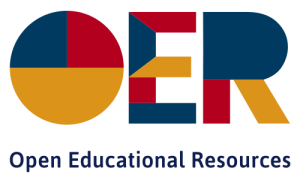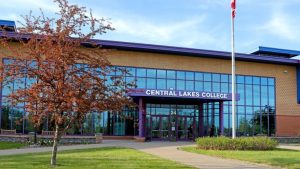1 Introduction: History of the Pikula OER Learning Circle Model
An interdisciplinary, collaborative support system for faculty in adopting, redesigning, and authoring of OER
This guide shares the OER (Open Educational Resources ) Learning Circle Process and Model. This model has been used successfully to support faculty at both individual institutions as well as the Minnesota State system level. With the use of this model, faculty have learned about Open Educational Resources and adopted, curated, and created OER to redesign their courses around these resources.[1]
History
The OER Faculty Development Learning Circle Model was born at Central Lakes College in Brainerd, Minnesota.[2]
 |
| “OERinfo”, image from Wikimedia Commons, licensed CC0 |
- The Learning Circle Process is rooted in learning theory practices and the voices of novice practitioners and indigenous tribal community practices and ideologies.
- The Learning Circle Model and Process was created to allow participants to be met where they are in the learning process. They may know nothing yet about OER, or they may have extensive knowledge and experience with OER. The process allows faculty the autonomy to create an individual plan for success that acknowledges and accommodates work, family, and personal priorities, while providing facilitator support and the opportunity to engage in collaborative communication and self-exploration in an empathic and supportive environment .
In January of 2014 David Ernst from the University of Minnesota, the creator and manager of the Open Textbook Library,[3] Todd Digby, the OER representative from the Minnesota State system office, and Gary Hunter, the system legal advisor, were invited to give a presentation to the Central Lakes faculty on OER. Ultimately the interest in OER that was generated by this presentation led to the creation of a OER committee at Central Lakes, and the participation of several faculty in the system-offered Open
|
Image of the city of Brainerd Minnesota
|
| “Brainerd Minnesota,” image from Wikipedia, Licensed CC BY-SA 3.0 |
Educational Network textbook[4] reviews. Some faculty adopted OER after being exposed to the Open Text Library reviews. A unexpected “Pearl”[5] or find was the realization that many faculty were already using free or self-created materials in their courses. As our OER Committee met and discussed these findings, we decided that Central Lakes College was going to move ahead as an institution in formalizing a OER adoption initiative.
At that point, we came to the conclusion that what was needed was money to pay and support the faculty through a process of choosing or creating OER materials. The college decided to apply for one of the $25,000 grants that Minnesota State was offering to colleges that were interested in promoting OER adoption. A large part of the application proposal centered around how to provide support for faculty as they investigated and began to use OER. I (Karen Pikula) had an idea based on the research that I was doing for my dissertation, on my personal experience in finding and adopting OER, and on my experience teaching at a local tribal college. My idea was for a faculty and librarian facilitated OER Learning Circle process and model that would support faculty wherever they were in the OER awareness and adoption process.[6]
| “Central Lakes College entrance,” image by Kelly Humphrey, Brainerd Dispatch News. No Licensed stated. |
The college was awarded the grant, and in the Spring of 2016 held its first OER Learning Circles at Central Lakes College.[7] The OER Learning circle model was used to lead the initial ten week session and all of the subsequent sessions of Learning Circles facilitated at Central Lakes College.
OER Campus Committee
As this work progressed the college also started a campus OER Committee. The creation of this committee evolved from the recognition that all of campus stakeholders and their perspectives were needed in conversations about the OER movement that was beginning to take root and grow, both at the local college and at various other Minnesota State colleges. The original committee consisted of a few interested faculty, the librarian, and the bookstore manager with key support from the Vice President of Academic and Student Affairs. As time progressed the committee grew to include a much more diversified and engaged group of stakeholders. The Central Lakes OER committee members included our librarian, faculty, bookstore and IT representatives, administration, and student representatives.
Rationale behind the OER initiative
The rationale driving this OER initiative was three-fold.
 |
| ”Rationale” Image created by Giovanni Antunez, Licensed CC BY-SA 4.0 |
First were the economic reasons:
-
- Save students money–no expensive textbooks to buy!
- Save the college money–these adoptions saved the college an enormous amount of money in college provided textbooks for our PSEO (Postsecondary Enrollment Options) students.
- Save the College in the Schools partners (high school students taking college courses) money on textbooks.
Two additional reasons:
-
- Increase student success by promoting more diverse learning materials
- Nurture the academic freedom of faculty
Research and experience has shown some barriers to new teacher success:
- They do not have enough time to learn or to do their work.
- They do not enough time to apply what they were learning at the time they were learning it.
- They do not have time to collaborate with other learners, mentors, or experts in their fields.
- They do not have needed support services: from administration, from peers, or help with organization, pedagogy and time saving measures.[8]

Image with the word, “Research” Research by Nick Youngson CC BY-SA 3.0 Alpha Stock Images
The same things apply to faculty who are looking at the OER options, deciding whether to adopt and adapt, or to write their own materials. Learning Circles allow these issues to be addressed, faculty to be supported, and the time and talent of the faculty to be compensated.
Key Takeaways
- This could be you or your institution… We were just a small community college with a dream!
- An OER initiative requires funding. Be creative.
- It is critical that you create a campus OER committee consisting of key stakeholders.
- A faculty support model based on Learning Theory, Best Practices, and Research is essential to a successful campus OER initiative.
- Pikula, K. (2020, February 28). OER Learning Circles with Karen Pikula. [Video}. YouTube. https://www.youtube.com/watch?v=2Qis2ybDwhQ ↵
- Central Lakes College. (n.d.) Central Lakes College, Brainerd Minnesota at https://www.clcmn.edu/# ↵
- University of Minnesota. (n.d.). Open Textbook Library. From https://open.umn.edu/opentextbooks ↵
- University of Minnesota. (n.d.). Open Education Network. From https://open.umn.edu/oen/ ↵
- The author uses the word, “Pearl” as a metaphor for an Aha moment, or a Finding or insight. ↵
- Unpublished material from the author about her experiences in the process to promote the OER initiative. ↵
- Perrine, J. (2016, Feb. 1). CLC receives $25,000 OER grant. Campus News. From https://www.clcmn.edu/news/2016/02/01/clc-receives-25000-oer-grant/ ↵
- Pikula, K. (2015). Novice teachers’ perceptions of their ability to transfer teacher education program knowledge to performance in the classroom. Doctoral dissertation. From https://www.proquest.com/openview/a7272b00306a5f2fea8c6f8e7e8a31de/1.pdf?pq-origsite=gscholar&cbl=18750 ↵
The meaning of this word is that it intersects with several areas of knowledge ('disciplines'). For example, a science book can contain concepts from biology, chemistry, physics, etc. The word also applies to different fields of study, for example, a computer sciences professor uses philosophy to explain the major concepts of computer sciences to their students.
it refers to collaboration ('working together') across different areas of knowledge, for example, two professors teaching communications could collaborate (share) the authorship of a book on languages.
Adopting an OER (Open Educational Resources) means that an instructor integrates Open Educational Materials into their courses without significant revisions, similar to adopting and integrating any new textbook into an existing course. The difference here is that there is no publisher support when adopting OER. Definition adapted from https://libguides.unm.edu/OER_Primer/adopt_adapt_create
This term means that the instructor is using existing OER (Open Educational Resources) material for example, a textbook, a series of articles, or readings, and presenting them in a new or more pedagogic manner. But always giving credit to the original authors. Or, the instructor works in an OER content with previous permission from the original author.
In this case, the instructor is writing its OER (Open Educational Resources) materials using their own experience, or expertise.
The acronym OER stands by "Open Educational Resources"
The Learning Circle (LC) Model and Process were created to allow participants to be met where they are in the learning process. The author sometimes uses only the words 'model' or 'process' and sometimes both.
The author uses the word, “Pearl” as a metaphor for an Aha moment, or a Finding or insight
the active process of raising knowledge or perception of a process, in this case, the need to raise 'awareness' about OER.
a new initiative that is constantly evolving and growing as the idea becomes more popular (more people are adopting the idea or initiative).
The term stands for "Information Technology."
the logical reasons and foundational principles of action for an initiative, in this case, the 'OER initiative'.


